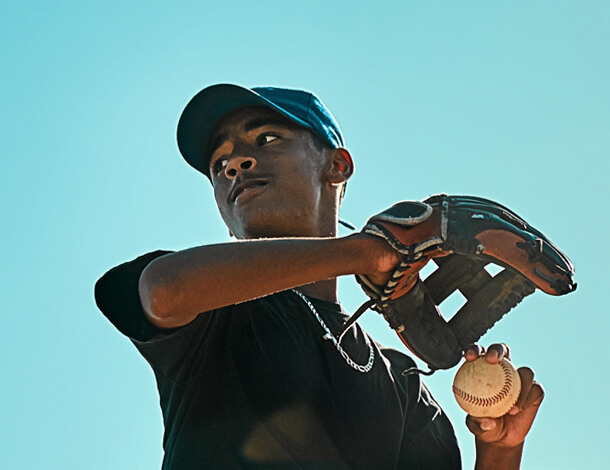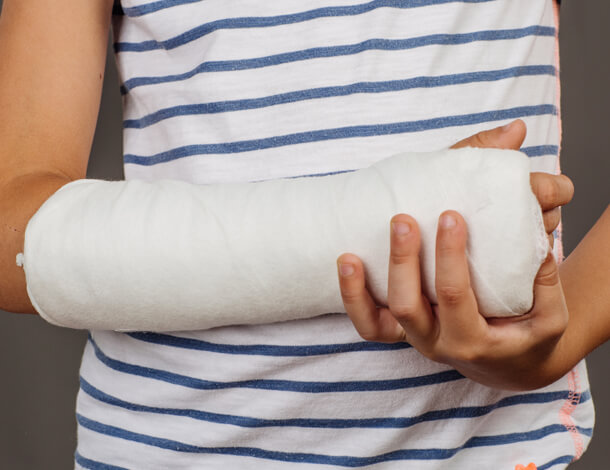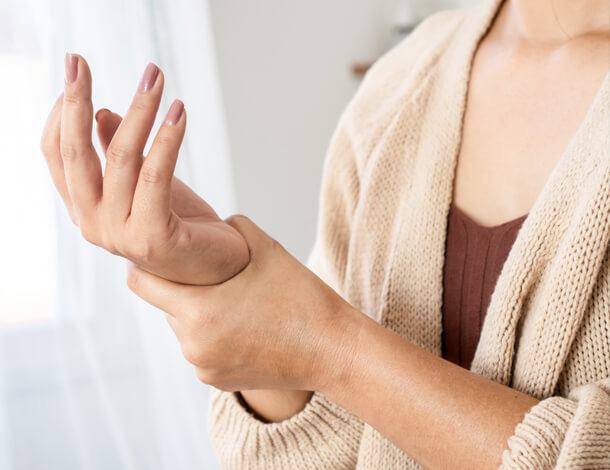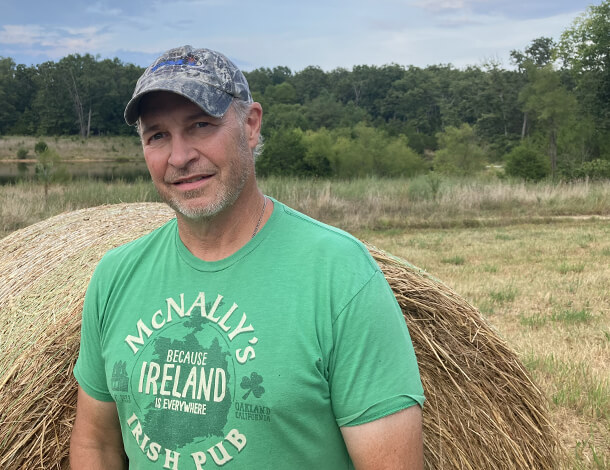Tommy John Injury: Complete Guide to Recovery & Treatment

Every year, thousands of athletes learn they’ve torn their ulnar collateral ligament. This “Tommy John” injury can sideline players for months and might even end careers. If you’re an overhead throwing athlete with elbow pain affecting your throwing or daily activities, this article will help you better understand the symptoms associated with this condition and give you the info you need to know about treatment options.
Whether you’re a weekend player with elbow pain or a competitive athlete who can’t throw as hard as before, keep reading to learn how to spot the early symptoms of a UCL injury, get tips for preventing a Tommy John injury, and find out when elbow reconstruction surgery is the best treatment option.
What Is a Tommy John Injury?
A Tommy John injury happens when you tear or hurt the ulnar collateral ligament (UCL). This thick band of tissue connects your upper arm bone to your forearm bone on the inside of your elbow, helping to keep your elbow joint stable when throwing.
The UCL prevents your elbow from opening up on the inside when you pull your arm back to throw. Throwing puts unnatural stress on your elbow joint. For instance, when you throw a fastball, the strain can exceed what this ligament can handle.
Tommy John injuries have increased significantly over the past 20 years. The number of active major-league pitchers who had Tommy John surgery hit 35.3% in 2023, which is 29% more than in 2016. What used to end careers is now a routine ulnar collateral ligament reconstruction surgery, and many athletes return as strong as before. However, recovery takes considerable time, typically 12 to 18 months, before you can return to competition.
Who’s at Risk?
Tommy John injuries are becoming more common, particularly among young athletes. Baseball pitchers face the highest risk, but ulnar collateral ligament injuries can occur in anyone doing repetitive overhead throwing or activities that stress the elbow. This includes some track and field athletes, gymnasts, volleyball players, and position baseball and softball players.
Fast fact: 67.4% of UCL surgeries were performed on athletes ages 16 to 20, including players in Little League.
Young athletes may be at higher risk because their bones are still growing, they’re still learning proper throwing form, and they often play year-round without adequate rest.
Can Non-Athletes Get Tommy John Injuries?
While UCL tears are most commonly associated with baseball players, they’re not limited to athletes. You can also get a Tommy John injury after a fall on an outstretched hand, direct blow to your elbow, repetitive overhead activities at work, or as a result of recreational activities like tennis or swimming, and weightlifting with poor form.
Non-athletes with damage typically have better success with non-surgical treatments to restore ulnar collateral ligament function, as they don’t need to return to the high demands of competitive throwing sports.
Types of UCL Injuries
UCL injuries range in severity. Each type requires different treatment and affects an athlete’s ability to play. Most develop gradually as the ulnar collateral ligament breaks down from repeatedly throwing.
Grade 1: Mild UCL Injury
Ulnar collateral ligament injuries classified as Grade 1 involve small stretches or tiny tears.
- What it feels like: Mild pain and tenderness on the inside of your elbow, especially after throwing.
- How it affects your mobility: Your performance might drop slightly.
- Treatment: You can usually continue playing with rest and modified training.
Grade 2: Moderate UCL Injury
UCL injuries categorized as Grade 2 are partial tears.
- What it feels like: More pain. You’ll probably feel pain when throwing, and your elbow might feel unstable when throwing.
- How it affects your mobility: You can’t throw as hard or as accurately.
- Treatment: These injuries need more rest, treatment, and possibly surgery.
Grade 3: Severe UCL Injury
Ulnar collateral ligament injuries described as Grade 3 are complete tears.
- What it feels like: Significant pain and instability when they try to throw.
- How it affects your mobility: Athletes with complete UCL tears can’t throw at their previous level.
- Treatment: Usually requires elbow surgery.
Causes of Tommy John Injuries
There are two primary factors that contribute to UCL tears: repetitive throwing and poor throwing technique.
Repetitive throwing puts stress on the UCL with each pitch. The stress creates tiny damage in the ligament, leading to breakdown and sometimes calcium buildup. Over time, this results in a weak ligament, causing pain and looseness.
Poor throwing form raises your risk for a Tommy John injury. When your body’s movement breaks down, increased stress is placed on your elbow joint. Use of poor technique blocks energy transfer from your legs and core through your arm.
Additional Risk Factors
Inadequate rest between throwing sessions doesn’t give the ulnar collateral ligament time to heal from the tiny damage.
Fatigue affects your throwing form, making it more challenging to support your elbow properly during the throwing motion. When your legs, core, and shoulder muscles become tired, more stress hits the smaller structures around your elbow, including the UCL.
Previous injuries can change how you throw or create poor movement patterns that put extra stress on the UCL. Athletes who’ve hurt their shoulder or elbow before might change how they throw in ways that increase UCL stress.
Tommy John Ligament Injury Symptoms
The most common signs of a UCL tear include pain on the inside of the elbow during throwing and overhead activities, or after throwing, as well as:
- Decreased throwing velocity or accuracy. Athletes notice they can’t throw as hard as usual, or their control gets worse.
- Elbow instability. During throwing, athletes report that their elbows feel “loose” or wobbly.
Pro-tip: A sudden “pop” or sharp pain that stops you from throwing requires immediate medical attention. Other serious symptoms are tingling or numbness in the ring and pinky fingers, as well as the complete inability to compete at your previous level, and significant pain during daily activities
Diagnosing UCL Damage
Getting diagnosed properly needs a comprehensive evaluation by an experienced specialist in elbow care. Doctors use physical examinations (with specific stress tests)—as well as advanced imaging tests—to accurately assess UCL damage.
Free download: Use our free elbow pain self-assessment tool to understand your symptoms better.
Torn Ulnar Collateral Ligament Treatments
Tommy John treatments depend on the severity of the injury to the ulnar collateral ligament. Treatment goes from non-invasive care for partial tears to surgical reconstruction for complete tears.
Conservative Treatments for UCL Injuries
Non-surgical treatment is the first option for partial UCL tears. Conservative treatment has success rates of less than 50% for pitchers returning to their previous level. This works best for partial tears and non-professional athletes who don’t need to return to high-level competitive throwing.
Therapy for a Tommy John injury focuses on fixing proper throwing mechanics, building shoulder and core strength, increasing flexibility, and improving shoulder blade movement. Treatment typically takes several months.
Some athletes can continue playing with modifications, such as changing positions, reducing throwing intensity, or limiting throwing sessions. When conservative treatment fails to return the athlete to their desired level, elbow reconstruction surgery becomes necessary to restore elbow stability and allow return to overhead throwing activities.
Tommy John Surgical Procedures
Two main surgical options exist, and the choice depends on the type and location of your tear. An ulnar collateral ligament repair works best for younger athletes with sudden tears, where the ligament is torn but otherwise healthy. The surgeon reattaches the UCL tissue. Recovery is faster, often taking 6-12 months for athletes to return to their previous level.
Fast fact: More than 1,000 professional pitchers have had Tommy John surgery since Dr. Frank Jobe operated on former Major League Baseball pitcher Tommy John in 1974.
UCL reconstruction (also known as Tommy John surgery) treats ligaments that have chronic damage or complete tears. This completely replaces the UCL with a tendon graft and is the more common procedure for college and professional athletes, with a longer recovery of 10-18 months.
The Technique
This reconstructive surgery for Tommy John injuries involves taking a healthy tendon from another part of your body or, less commonly, using donor tissue. Surgeons commonly use the palmaris longus tendon from the wrist or a hamstring tendon, which goes through bone tunnels to rebuild the damaged ulnar collateral ligament.
To attach the new tendon, holes are drilled in the two bones (the upper arm and the forearm) originally connected by the ulnar collateral ligament. Then, the elbow surgeon creates small tunnels in these bones and weaves the new tendon through these tunnels in a figure-eight pattern to recreate the original UCL’s function.
UCL Reconstruction Recovery
Recovery from Tommy John injury surgery typically follows four phases:
Phase 1 (Weeks 0-3)
- The elbow is protected in a brace
- Focus on preventing stiffness while protecting the new graft
- Gentle range of motion exercises for the wrist, fingers, and shoulder
Phase 2 (Weeks 4-8)
- Begin moving the elbow more freely
- Start light strengthening exercises
- Goal: Gradually restore the full range of motion
Phase 3 (Weeks 9-16)
- More intensive strengthening of the entire arm and core
- Work on flexibility and movement preparation
- Prepare the body for throwing motions
Phase 4 (Months 4-12)
- Begin throwing program with short tosses
- Gradually build up distance and intensity
- Progress toward competitive play over several months
Tips for the Prevention of Tommy John Injuries
Prevention involves maintaining proper form, consistent training practices, and overall fitness. While you can’t stop all elbow ligament tears, following these steps can reduce your risk.
Proper throwing form is critical. If you’re an overhead throwing athlete, work with a qualified coach to develop throwing patterns with balanced leg drive, proper arm slot and timing, complete follow-through, and energy transfer from legs to arm.
Pitch count rules set age-appropriate limits and required rest periods.
Year-round training plans help athletes build strength and skill while giving their bodies time to recover and heal. This means planned periods of harder and easier training, rather than maintaining the same intensity throughout the year.
Strength and conditioning programs work on your entire body, not just the throwing arm. Core strength, hip mobility, shoulder stability, shoulder blade movement, and forearm strength all reduce stress on your elbow.
Pro-tip: According to the American Academy of Orthopaedic Surgeons, frequent pain means an athlete needs rest from their sport.
Additional Ways to Avoid Injuring Your UCL
Cross-training enables you to maintain your fitness while reducing the risk of repetitive throwing injuries. Swimming, running, basketball, weight training, and stretching activities help athletes condition their bodies during rest periods.
Proper equipment and playing conditions include using age-appropriate baseball weights and sizes, maintaining proper mound conditions, adequate warm-up time, and well-maintained fields.
FAQs About Tommy John UCL Injuries
How Long Does It Take to Heal After a UCL Reconstruction?
Ulnar collateral ligament reconstruction recovery takes 10-18 months for athletes to return to competitive play, with throwing programs beginning around 4-6 months post-surgery.
What Is the Success Rate of Ulnar Collateral Ligament Reconstruction?
Approximately 80% of athletes return to the same level of competition as before, with 90% resuming their involvement in sport (and 86% returning to at least their previous competition level).
So, What’s the Story Behind the Name?
Tommy John surgery is named after Tommy John, a Major League Baseball pitcher for the Los Angeles Dodgers. In 1974, he became the first athlete to undergo this procedure.
At the time, his elbow specialist estimated only a 1% chance of success. John missed the entire 1975 season but returned in 1976 and played for 14 more years, winning 164 games after surgery compared to 124 before. His success made this ulnar collateral ligament procedure routine, saving countless athletic careers.
Can You Avoid UCL Tears?
Yes. Some players avoid torn ulnar collateral ligament injuries by employing proper throwing mechanics, adhering to appropriate pitch counts, ensuring adequate rest between games, maintaining year-round conditioning, and promptly recognizing symptoms.
Do Only Baseball Players Get UCL Tears?
No. While they’re most common in baseball pitchers, elbow ligament injuries can happen during any overhead throwing sport, including tennis, volleyball, javelin, and even in non-athletes from falls or repetitive activities.
Where to Go for Expert Elbow Injury Care
Choosing the right doctor for a complex elbow injury can make a big difference in how fast you recover. Not all healthcare providers possess the specialized knowledge and experience necessary to accurately diagnose and treat these complex injuries.
Elbow pain doctors who regularly treat throwing athletes understand the unique demands placed on the UCL and give sport-specific guidance for treatment and return to activity after a Tommy John injury. They’re familiar with the latest diagnostic techniques, conservative treatment options, and surgical advances for athletes.
Trust IHTSC for Tommy John Injury Treatment
At Indiana Hand to Shoulder Center, our elbow sports medicine specialists have extensive experience treating athletes of all levels, from youth baseball players to professional athletes. Our team’s personalized treatment plans help amateur and professional athletes return to their sport safely and effectively after experiencing elbow injuries.
Contact Indiana Hand to Shoulder Center today to schedule a consultation with one of our experts in elbow care and take the first step toward getting back in the game.
Request an appointment online or call us at (317) 751-5904.
Reviewed by: Dr. Kathryn M. Peck
You Might Also Like:
Disclaimer: The materials on this website have been prepared for informational purposes only and do not constitute advice. You should not act or rely upon any medical information on this website without a physician’s advice. The information contained within this website is not intended to serve as a substitution for a thorough examination from a qualified healthcare provider. The display of this information is not intended to create a health care provider-patient relationship between the Indiana Hand to Shoulder Center and you.



